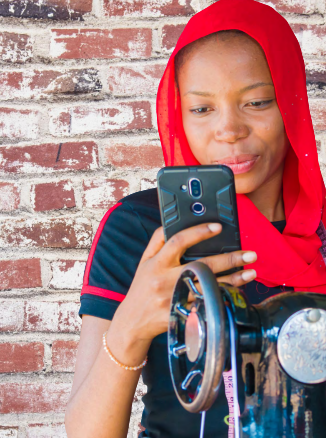In Nigeria, more men own a mobile phone, compared to women, according to the Mobile Gender Gap Report 2023 published by the GSMA.
The GSMA is a global organisation unifying the mobile ecosystem to discover, develop and deliver innovation that helps business and society thrive; while the MGGR explores the latest data on the mobile gender gap, the key barriers preventing women’s equal access to and use of mobile, and what is needed to close the mobile internet gender gap.
The report also highlights the socio-economic benefits of addressing these barriers for the mobile industry, the economy and society more broadly, and women themselves.

According to the report, in mid- and low-income countries, a combined total of 440 million women do not own mobile phones; while, globally, 61% of women now use mobile internet.
The report adds that globally, women are 19% less likely than men to use mobile internet.
“This means that 310m fewer women than men globally use mobile internet,” the report added; noting that in order “to close the mobile internet gender gap by 2030, 100m women a year on average must start using it.”
The report stated that in Nigeria, 91% of men own a mobile phone, compared to 86% women, indicating a gender gap of 5%.
For mobile internet usage, 56% men in Nigeria use mobile internet, compared to 34% women, bringing the gender gap in mobile internet use to 38%.
The telecommunication body in its ‘The Mobile Gender Gap Report 2023’, blamed the gender gap on the affordability, literacy, digital skills, and lack of perceived relevance.
The report said, “The underlying gender gap in mobile ownership across low- and middle-income countries have changed very little since 2017.

“Women across these countries are seven per cent less likely than men to own a mobile phone.
“440 million women [across the countries polled] still do not own one and are proving difficult to reach.
“The top reported barriers to mobile phone ownership are affordability, literacy and digital skills and lack of perceived relevance.
“Women who do not own a phone were more likely than men to report that being able to use someone else’s phone made them feel they did not need one of their own.”
The organization further lamented that in the past one year, no progress had been made in closing gender gaps in mobile ownership or mobile internet adoption.
It added that women’s levels of mobile ownership and mobile internet adoption stayed the same or increased in most survey countries because of the global economic crisis in 2022.
It noted that seven per cent of women were less likely than men to own a mobile phone, which translated into 130 million fewer women than men owning one.
GSMA noted, “The gender gap in smart phone ownership also remained relatively unchanged in 2022.
“This gender gap had been narrowing, but it widened slightly in 2021 to 18 per cent and now stands at 17 per cent.
“Addressing these gender gaps is crucial, as owning a mobile phone, particularly a smartphone, significantly increases mobile internet awareness and use among men and women.”
GSMA’s study discovered that the mobile Internet gender gap narrowed substantially between 2017 and 2020, from 25 per cent to 15 per cent. It noted that progress stalled in 2021 when the gender gap widened slightly to 18 per cent.
It noted that the gender gap currently remained relatively unchanged, with women 19 per cent less likely than men to use mobile internet.

According to the association, 60 million women in low-and-middle-income countries adopted mobile Internet in 2022, but generally 310 million fewer women than men use the mobile Internet.
GSMA explained, “In 2022, there was no notable change in any regional gender gaps in mobile ownership or mobile Internet, with the widest gaps still in South Asia and Sub-Saharan Africa.
“Women are 41 per cent less likely than men to use mobile Internet in South Asia and 36 per cent less likely than men to do so in Sub-Saharan Africa. In the wake of the COVID-19 pandemic and the ongoing economic crisis, this further slowdown in digital inclusion is perhaps not surprising.
“However, it is a stark reminder to focus attention, action, and investment on addressing the digital divide, particularly the digital gender divide.”
“The mobile internet gender gap did not reduce in 2022, and it remains unchanged, only 360 million more women in LMICs will adopt it by 2030 (compared to 490 million more men).”
It added, “To close the gap by 2030, another 450 million women would need to start using mobile Internet, bringing the total to 810 million women, an equivalent of 100 million women on average every year.”
GSMA pointed out that the gender gap in mobile ownership and mobile Internet usage not only reflected existing gender inequalities but also threatened to exacerbate them, particularly as economies suffered in the current economic crisis and mobile became less affordable.


